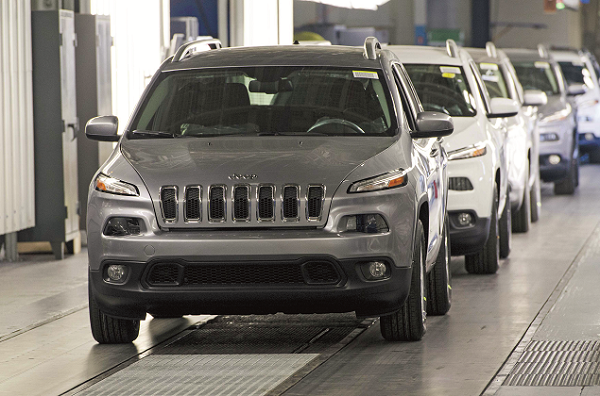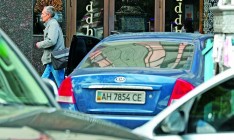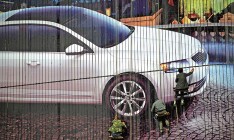Business
CollapsePassenger car market immersed in lethargy

This year was not only the most difficult for the automotive market in Ukraine over the past 10 years. It can even be described as the disappointment of the decade, or at least of the past five years. Every year after the crisis in 2009 the players on the domestic automotive market believed in its recovery and developed their policies in view of deferred demand, toying with the idea that our country has one of the lowest number of vehicles. Even during the crisis they had reasons to believe that the domestic market had huge growth potential, says President of the Board of Renault Ukraine Yana Minenko. The number of vehicles per one thousand Ukrainians is a mere 197, while in Belarus this figure is 282, in Russia – 293, in France – 575 and in the U.S. – 809. This data was used to outline investment and sales policies.
Nonetheless, there has not been any leap forward. Moreover, today the market has slid to unprecedented lows over the past ten years, which has forced certain operators to pull out of the business and even put their assets up for sale. The remaining players have no choice but to survive on maintenance of previously sold vehicles.
Bets are placed
On the eve of the crisis in 2009, Ukraine was considered one of the most promising car markets. In 2008, the country ranked seventh in Europe in terms of the number of sold cars (companies sold 623,000 vehicles) and entered the top three in terms of growth in car sales. Even the crisis did not have a negative impact on the attractiveness of the domestic market for the world’s leading automakers that hoped the crisis would not last long and predicted a fairly rapid recovery in sales.
The market saw the first post-crisis burst of activity in 2011, when its capacity increased to 220,000 vehicles (almost by 36% compared with the previous year). Manufacturers were convinced that the trend would not change and began working on the most optimistic plans for the short- and medium-term prospects. “We expected further growth of the market in 2012–2013 to the tune of 250,000 and 300,000 vehicles, respectively,” says CEO of Peugeot Citroen Ukraine Loic Sibrak. CEO of Atlant-M in Ukraine Hennadiy Pristrom notes that his company forecast annual growth of sales of automobiles in the range of 15%, expecting that by 2016–2017 the volume of the automotive market would return to the pre-crisis level.
The expectations of industry experts that the automotive market would improve were quite rational from the point of view of macroeconomic indicators and calculations. They based their plans on forecasts of GDP growth published by the Cabinet of Ministers, the National Bank of Ukraine, the International Monetary Fund and the ratings and analytical studies of international consulting firms and rating agencies, which also predicted a revival of economic growth in Ukraine, says Marketing Director for the AIS Group of Companies Serhiy Borovyk. Chief Commodity Market Expert and Analyst at Honda Ukraine Yulia Antonyshena says hopes were also placed on the resumption of car loans and the extremely low saturation of Ukrainian market.
The players’ optimism was expressed quite tangibly: the companies continued to invest millions in development of dealer networks, says General Director of AUTO-Consulting Oleh Omelnytskiy. It suffices to recall that one of the largest projects recently implemented in the country was the construction and opening of the multi-brand complex with a total area of 6 hectares by the NIKO Group of Companies near the Boryspil highway at the end of 2013. It cost the group US $45 mn.
Market
Planning their businesses for the next year, at the end of 2013 market players predicted a decline of 10% to 190,000, while other operators optimistically predicted a short-term stagnation, claiming it would be possible to sell 200,000 new vehicles. January and February of this year even encouraged pessimists: sales increased by 20% compared to the same period in 2013. However, the first negative signs were observed in February with the first round of devaluation of the hryvnia, which, in fact, pulled in sales within a month: fearing further devaluation of the national currency, buyers were quick to turn money into movable property. But in the following months the market shrunk by more than half and in May (when dealers sold 3,082 new cars, which was 2.5 times lower than the lowest average monthly car sales performance) hit an unprecedented bottom over the past ten years.
Based on the results of ten months in 2014, the passenger car market declined by 50% compared to the same period last year to 79,000. The average monthly rate of sales for the period amounted to 8,000 passenger cars. Omelnytskiy says that the last time such low monthly sales results were observed was in 2000.
The situation was not salvaged by cancellation of car recycling duty or lowering of the rates of special duties on foreign cars. Marketing gimmicks also did not have a serious impact on the trend. Their resources were not high enough to offer the market long-term programs for promoting car sales.
The most popular offer introduced by car dealers this year was fixing of the exchange rates specified in price lists. Though after the first stage of devaluation of the hryvnia (of the three that were observed this year), the market reacted to such a trick with the aforementioned monthly influx in sales, the next stages of devaluation of the national currency brought in no profits for market players.
Sibrak assures that operators have tried their best to level exchange rate fluctuations, but now it is impossible to freeze the exchange rate for an extended period. So, his company offers regular discounts, which, by the way, is also practiced by other players. In general, the average market discounts did not exceed 5%, says Borovyk, with the exception of rare cases when discount rates reached 20%.
Antonyshena confirmed that the situation in 2014 has completely changed the approach of market operators to the process of car sales. In fact, product strategy was modified. Sibrak noted that the common measure today is to optimize the lineup: “In times of economic crisis reduction affected the niche models of cars, which are in limited demand. Until now, there was no reduction of Peugeot and Citroen lineups, although such an option has been discussed”. Borovyk assures that now the AIS is focusing on the sale of low-cost and low-line vehicles. Representatives of Renault Ukraine claim that the company reduced the number of models in order to focus on the best-selling cars.
Open for business, anybody?
The situation on the car market is so critical that some operators had to think about the future viability of their businesses. On October 29 Capital reported that a number of players put up for sale their showrooms and complexes including service stations, gas stations and car wash outlets.
It is very difficult to support businesses in the current financial situation and salvaging them requires major investments, says Antonyshena. The country has an excessive number of car dealerships, which build upon the annual sales volume of at least 300,000 vehicles, says Pristrom.
Accordingly, in terms of the expected market volume in the range of 92,000–93,000 vehicles this year (this forecast was made by Director of the Marketing and Advertising Department at NIKO Management Yaroslav Vovk), the lion's share of retail spaces will not bring profits to their owners, which is the reason they are trying to get rid of assets that are not bringing in any positive cash flow. “Talks about going out of business or selling are primarily raised by showrooms in leased spaces, which currently do not generate enough profits to maintain the showrooms,” believes Vovk. Borovyk says it is most likely that unfinished facilities in the final stages of construction works without any dealer contracts are put up for sale.
Be that as it may, most operators are inclined to believe that car dealerships are sold by independent dealers (i.e. unofficial or semi-legal) that do not have stable supply chains. Omelnytskiy says that at present the share of such dealers is not higher than 5% of the market. Such operators mostly sell luxury cars and some dealers sell models that are not delivered by official importers.
Nevertheless, market players do not rule out that creditors may put pressure on the businesses of a number of players seeing as they were opened mostly on borrowed funds. “Today, it is easier to maintain positions for the major players with extensive chains of dealers in different cities of Ukraine, because their situation is more stable and there is more room to maneuver,” says Sibrak.
But even the strongest players were not spared by the current crisis. Pristrom complains that his company is now focused on cutting costs. “It is unlikely that importers will see any profits this year and they will more likely think about minimizing their losses,” says Vovk. Sibrak says those who could not adjust to provision of services and reduce their costs are currently sustaining major losses.
Fortuneless future
In contrast to 2009, today no one is trying to show optimism about the immediate prospects of the car market. Improvement of the situation is possible only after cessation of hostilities, peaceful resolution of the conflict in the east of the country and successful implementation of economic reforms, says Antonyshena.
Vovk is convinced that today the key factor in normalization of the market is stabilization of the national currency. Car dealers agree that a cautious forecast of growth of the car market can only be made for 2016. The companies comment on the scenario of market development in 2015 quite modestly. “Our forecast of the sale of new cars in 2015 is 57,000–70,000 units,” says Borovyk. “For as long as the country is in a state of war, there will not be any changes for the better”. Vovk is more optimistic, predicting next year’s sales at the level of 80,000–100,000 units. In his opinion, the main factors influencing the market will be territorial reduction due to the loss of Crimea, the sharp decline in sales in the Donetsk and Luhansk oblasts and devaluation of the national currency. Both factors have been influencing the market this year. In particular, according to the operators, in the time of peace the annexed Crimea and the Donetsk and Luhansk oblasts accounted for nearly 30% of car sales in the country.






 of the agreement of syndication with Financial Times Limited are strictly prohibited. Use of materials which refers to France-Presse, Reuters, Interfax-Ukraine, Ukrainian News, UNIAN agencies is strictly prohibited. Materials marked
of the agreement of syndication with Financial Times Limited are strictly prohibited. Use of materials which refers to France-Presse, Reuters, Interfax-Ukraine, Ukrainian News, UNIAN agencies is strictly prohibited. Materials marked  are published as advertisements.
are published as advertisements.